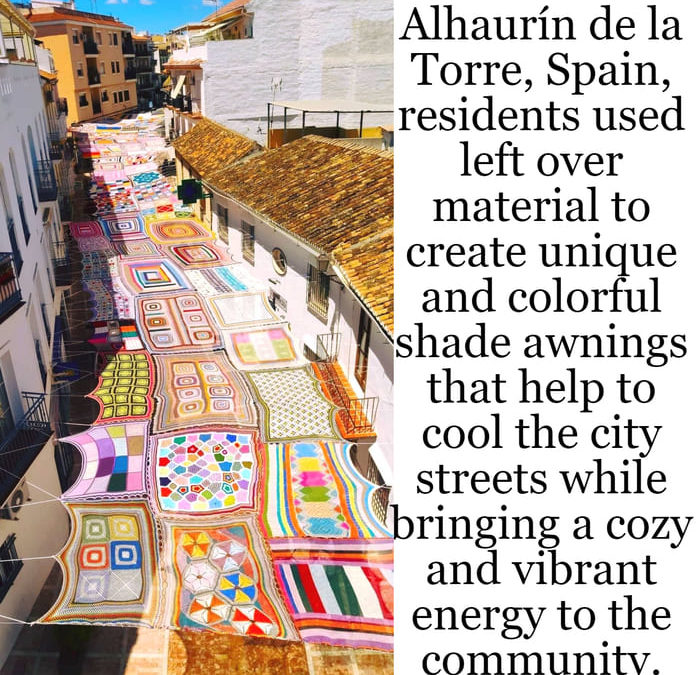Beautiful, Calming, Cooling Quilting Over Spanish City Streets
Alhaurín de la Torre, Spain, residents used left over material to create unique and colorful shade awnings that help to cool the city streets while bringing a cozy and vibrant energy to the community. Art really can change how a community experiences life!
ALHAURÍN DE LA TORRE
Unlike its equally venerable neighbour, Alhaurín el Grande, which has managed to preserve and even modestly flaunt a little of its Roman and Moorish heritage, Alhaurín de la Torre has conspired to hide its past with such ruthless efficiency that it is now almost impossible to find. Even the tower which gave it its name is long gone.
Finding the two Alhauríns is easy. Take the mighty N-340 highway south from Málaga and look for the turnoff onto the C-344 leading to Churriana. Then simply following the winding road along the Guadalhorce valley and into the Sierra de Mijas.
This easy access to the provincial capital is at the root of Alhaurín de la Torre’s economic resurrection and cultural decline. It has been seized upon by many who work in Málaga but prefer not to live in the conurbation, and is rapidly expanding as a commuter town. There is little doubt that with the current explosion of building in full swing, it will soon outstrip its neighbour in size and population. We shall then have the ironic situation of Alhaurín el Grande being the smaller of the two.
As yet, the town is still set among large plantations of citrus and avocado, but as it continues to grow, and land becomes increasingly scarce and valuable, it may be that many of them will disappear.
Having said all this, there is nonetheless history to find if the visitor is diligent enough, though this is chiefly in the outlying suburbs such as La Alquería and Cortijo Molina. Perhaps aware that time is their enemy, the town council, the ayuntamiento, has enterprisingly compiled an exhaustive list of archaeological sites, the Carta Arqueológica. This includes many sites which had previously been unrecorded, and which are not protected by preservation orders. It is obvious that these are the ones in most danger from the developers’ bulldozers.
La Alquería was once a town of sorts in its own right, beginning as a 3rd Century BC Iberian hill fort and flourishing for a while under the Romans before petering out around 200AD. Nevertheless, there are still vestigial remnants of Roman masonry in the area, though many of them are now on private land and out of reach.




















































